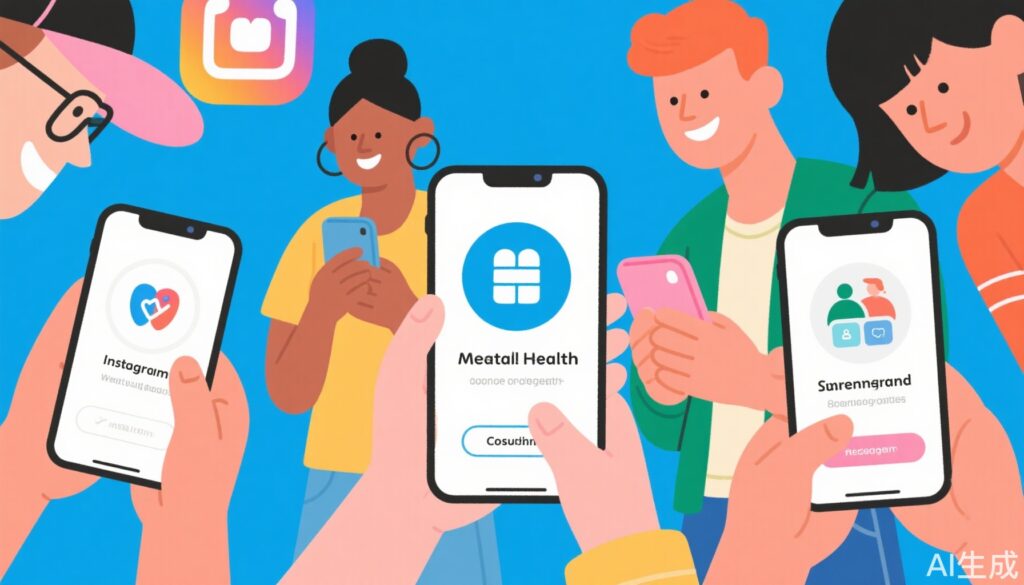Introduction
Mental health has swiftly emerged as a significant topic within Vietnamese society, particularly among the youth who are experiencing unprecedented pressures from various facets of life, including education and social expectations. Reports indicate that nearly one in five adolescents in Vietnam grapples with mental health challenges. Yet, many of these young individuals lack access to appropriate mental health services, largely due to cultural stigma and an insufficient mental health infrastructure. This growing concern is reflected in the increased discussion surrounding mental health on various social media platforms, such as Zalo and TikTok, where participants utilize these forums as platforms to advocate for emotional well-being and mental health awareness.
The Mental Health Landscape in Vietnam
Recent studies highlight the untenable extent of mental health issues among the youth in Vietnam. A 2025 study from the *Child and Adolescent Psychiatry and Mental Health* journal indicates a stark reality: about 19% of Vietnamese adolescents are affected by mental health disorders ranging from anxiety and depression to more serious conditions. The ramifications of these challenges include diminished quality of life, poor academic performance, and increased incidences of substance abuse.
Despite the prevalence of these conditions, access to professional mental health support remains severely limited. Culture plays a critical role here. In many Vietnamese communities, mental health concerns are frequently stigmatized, leading young individuals to refrain from seeking help for fear of being labeled as ‘crazy’ or ‘weak.’ Further complicating matters is the scarcity of trained mental health professionals and mental health resources, particularly in rural areas where traditional beliefs may dominate the way mental wellness is perceived.
Key Opinion Leaders and Mental Health Advocacy on Social Media
The ecosystem of social media is changing the way young people interact with mental health concepts. Platforms like Zalo and TikTok are seeing a surge in content dedicated to mental health awareness, often facilitated by Key Opinion Leaders (KOLs). These influencers share personal experiences, coping strategies, and recommended resources that delve into practices such as meditation, mindfulness, and stress management.
For instance, KOLs on TikTok are creating engaging content that not only educates followers about mental health issues but also promotes self-care routines. Such platforms help destigmatize mental health conversations by presenting them in relatable formats, thereby encouraging more of the youth demographic to engage in self-reflection and self-care activities.
The Role of Technology: AI-powered Tools
In addition to the supportive content fostered by human influencers, technology has introduced AI-powered mental health applications like Wysa and Woebot that have become increasingly popular in Vietnam, particularly among the youth. These applications offer guidance and support in an accessible format—conveniently available at any time and often with a degree of anonymity that users find appealing.
Wysa, for example, utilizes AI to provide evidence-based support, including cognitive behavioral therapy (CBT) techniques, mindfulness exercises, and emotional check-ins. Such tools mitigate some hesitations surrounding traditional therapy settings, allowing adolescents to explore their mental health in a private, flexible environment while still receiving guidance tailored to their needs.
Breaking Down Barriers: Misconceptions and Cultural Stigma
Despite the positive advancements in social media and technology regarding mental health, misconceptions still pose significant barriers. One common misconception is the belief that mental health issues are merely a phase or a sign of personal weakness. This view can prevent individuals from recognizing the legitimacy of what they are experiencing.
Another harmful behavior is the tendency to dismiss mental health discussions as unnecessary or overly dramatized. This can create a reluctance to engage with information on mental wellness, ultimately hindering progress in addressing these issues effectively.
To combat these misconceptions, it is vital to leverage the influential nature of social media to promote accurate depictions of mental health issues and normalize conversations about emotional distress, much like how physical health conditions are discussed.
Practical Approaches to Mental Health Care for Adolescents
Given the current climate, it becomes essential to cultivate correct health practices surrounding mental health to empower adolescents. Here are some recommendations:
– **Foster Open Conversations**: Encourage open dialogues about mental health at home and in schools to normalize discussions and reduce stigma.
– **Utilize Online Resources**: Encourage young individuals to take advantage of mental health apps that provide tools and support mechanisms.
– **Seek a Professional**: Encourage seeking help from a qualified mental health professional when needed, emphasizing that doing so is a sign of strength.
– **Practice Self-Care**: Promote self-care activities such as meditation, exercise, and creative outlets to improve emotional well-being.
These practical approaches can help empower adolescents to prioritize their mental well-being without fear or stigma.
Expert Recommendations
Mental health experts advocate for a multi-faceted approach to treatment and awareness. Building a robust mental health advocacy network via social media can be a powerful strategy in Vietnam. Dr. Nguyen Thuy Linh, a renowned mental health professional, states: “Utilizing both traditional methods of therapy and modern technology, such as AI applications, we can create a hybrid model of support that appeals to today’s youth. It is crucial to establish an ecosystem of trust that encourages them to prioritize mental health.”
What to Tell Patients: A Fictional Scenario
Consider the case of Daniel Nguyen, a 17-year-old high school student in Ho Chi Minh City, who has recently been feeling overwhelmed with academic pressure and social expectations. Daniel confided in a friend who often shares content from mental health KOLs on TikTok. Empowered by this interaction, Daniel began exploring meditation apps like Wysa, realizing these could help him navigate his feelings in privacy.
Through self-education, he acknowledged that his feelings were valid and encouraged by his friend, he decided not to shy away from discussing his struggles with his family and sought professional help at a local counseling service, demonstrating a proactive approach to his mental health.
This kind of outreach is essential, as it exemplifies how the combination of technology, peer support, and gradual acceptance can inspire adolescents to seek assistance and acknowledge their mental health challenges.
Conclusion
The intersection of mental health, cultural stigma, and technological advancements in Vietnam paints a complicated picture, but there are hopeful signs of change. Social media is playing a pivotal role in shaping conversations around mental health, particularly among adolescents who find themselves facing new and unique challenges. As KOLs, mental health applications, and supportive online communities flourish, the path towards enhancing mental health care access and reducing stigma is gradually clearing. The key lies in harnessing these tools to foster a generation that embraces mental wellness with open arms—where seeking help is viewed as a strength, not a weakness. There remains much work to be done, but with growing awareness and commitment to mental health advocacy, the potential for positive change is significant.



